YOU ARE LEARNING:
Ordering Different Types of Numbers

Ordering Different Types of Numbers
Positive and negative integers, fractions and decimals are all different types of numbers. They can be compared and ordered in size.
Different types of number suit different purposes.
When measuring we often use decimals, when counting we use whole numbers (also known as integers).
Which four options below are types of numbers?


You can select multiple answers
Which number in the image is a whole number?


Which number in the image is a decimal?


What type of number is 41?


Our final number is 76%.
This is a percentage which can also be represented as a decimal, 0.76.
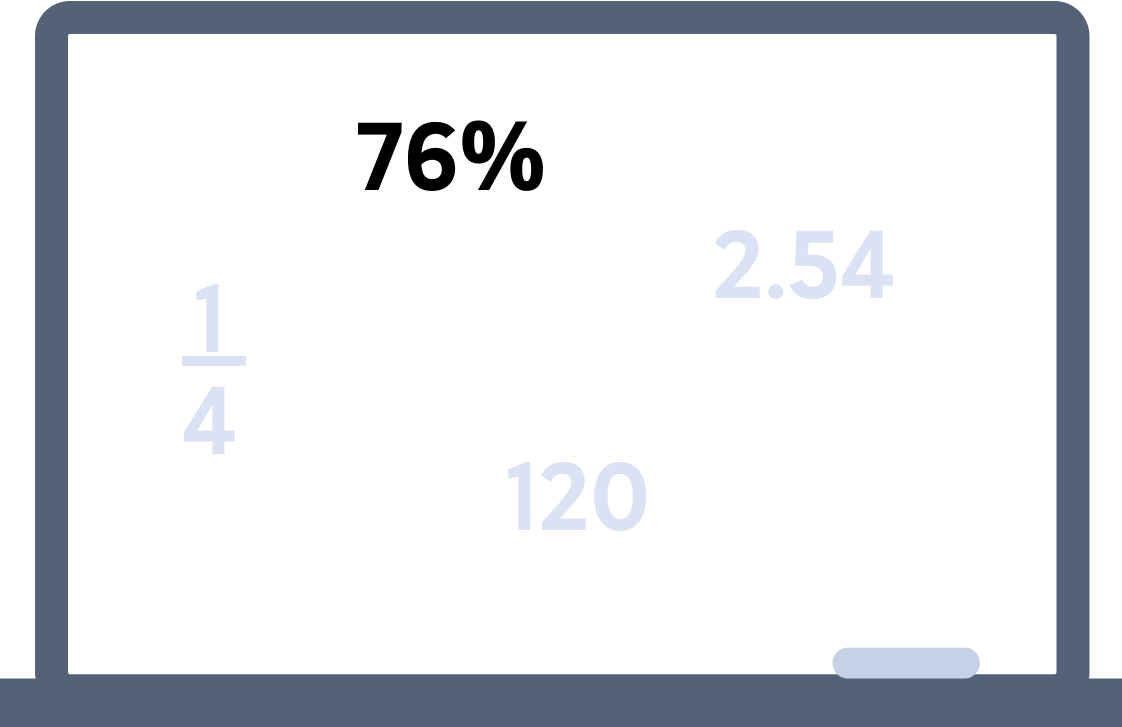
Fractions and decimals fit in between integers
Since fractions and decimals aren't whole numbers, they go in the spaces between the integers on a number line.
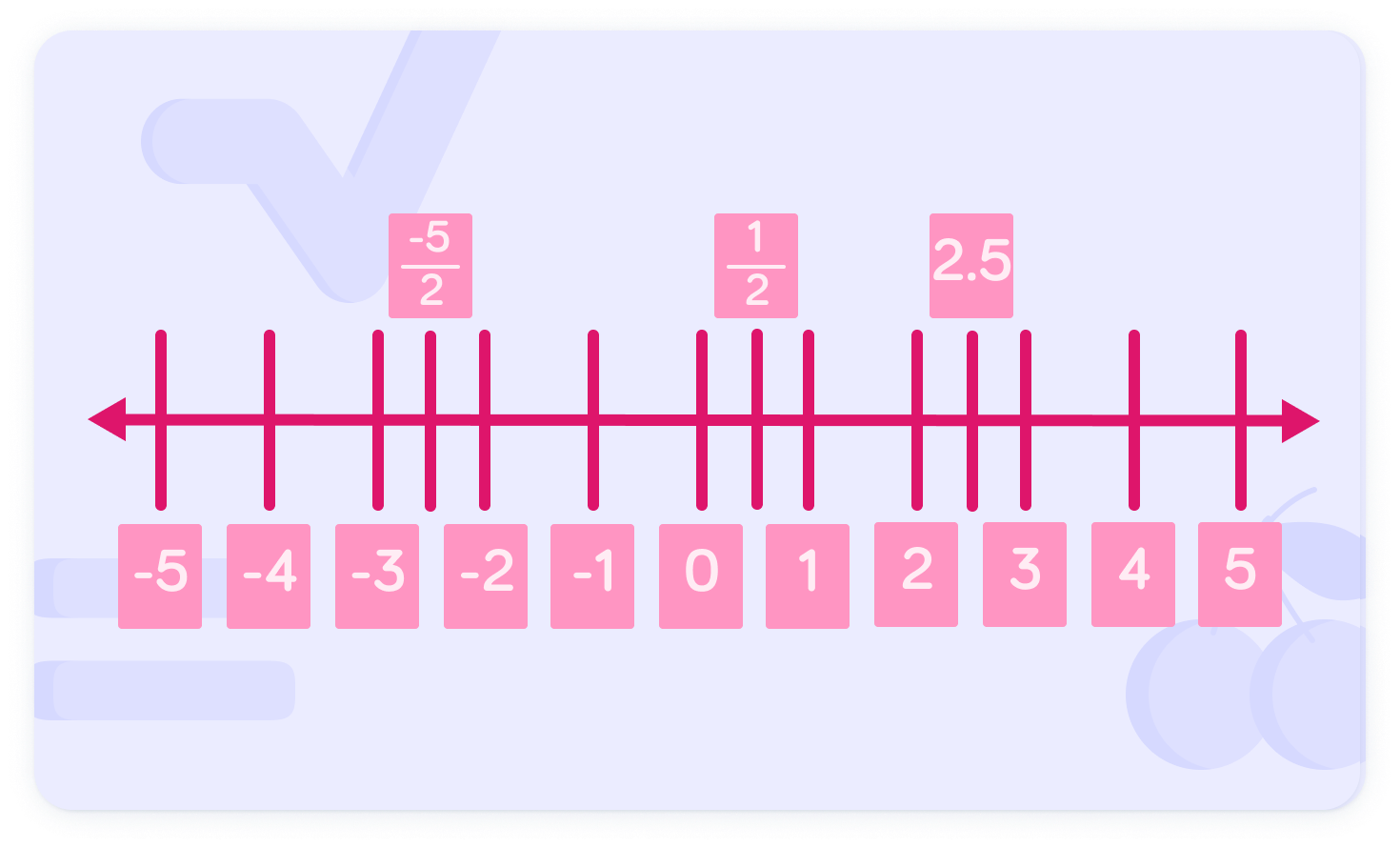
0.4 and 4.854 are both examples of decimals
They include a decimal point, where the numbers after the decimal point are the parts of a whole.
Like integer place value, each digit in a decimal has a unique decimal place value, which describes its size.
The first digit is called the tenths.

What does 4 represent in the number here? Tenths, hundredths, thousandths or ten thousandths?


Let's put these numbers in ascending order
In ascending order, which number do we need to start with?

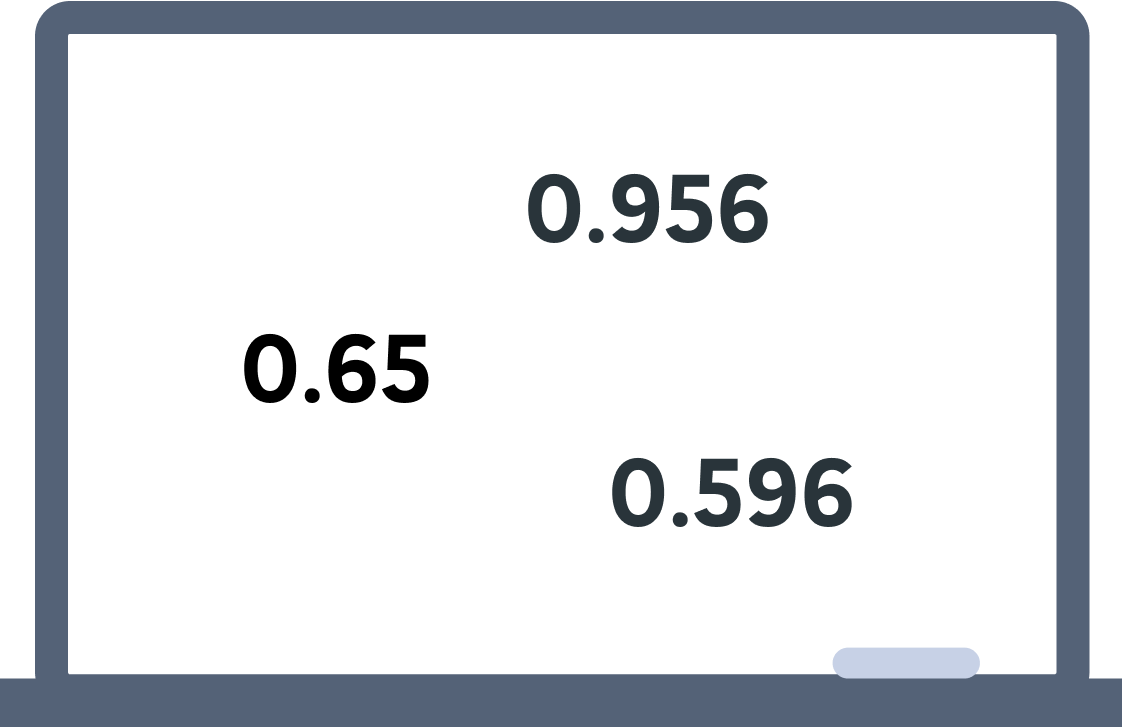
To find the smallest number, put them in a column.
Make sure to line up the decimal point.

Which is the smallest number of the three?


We now need to find the smaller of the two remaining numbers. Which is it?

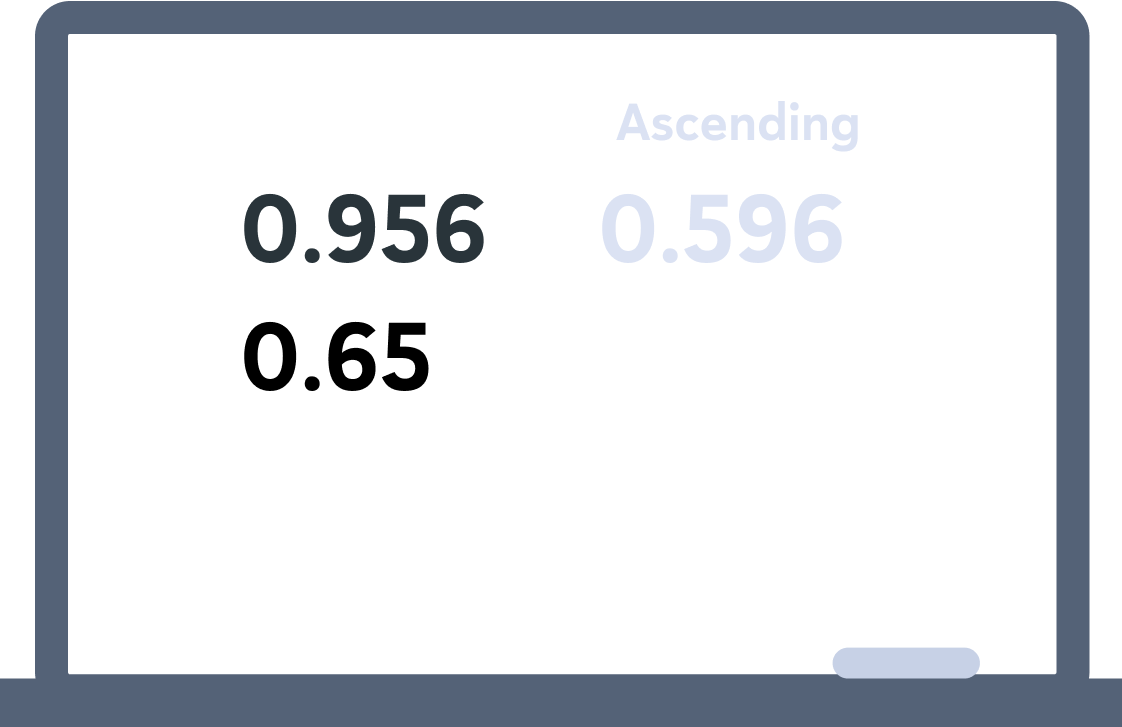
Now we can put the numbers in ascending order.
You can write them on one line now if you prefer.

Which of the following two decimal numbers is the largest?

A quick test! Which of the following decimals is largest?

How do we know which is larger between a decimal and a fraction?
Let's find out which of these is larger.
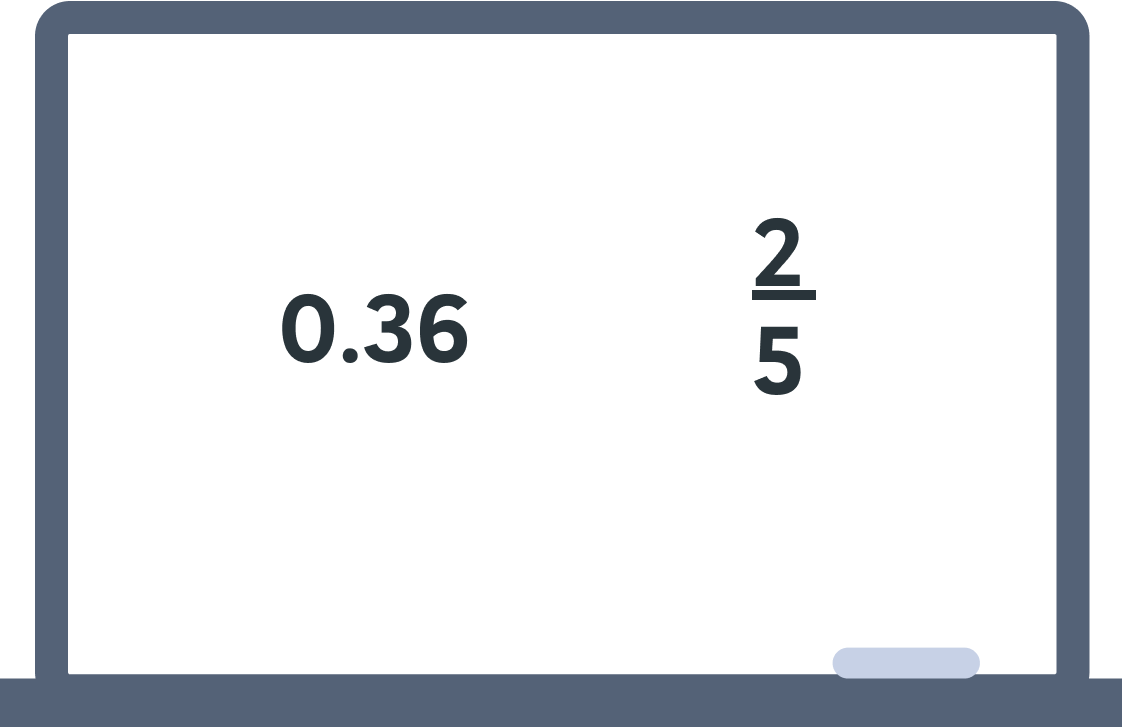
We need to convert the fraction to a decimal. What is 52 as a decimal?

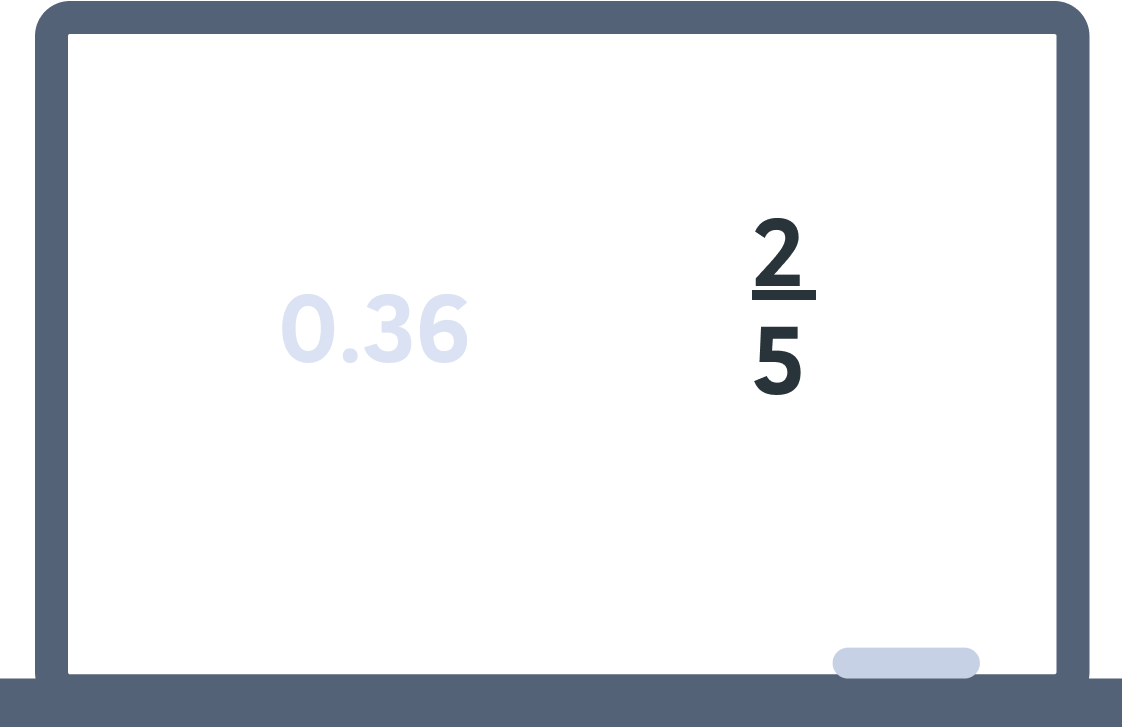
It is now easier to compare 0.4 with 0.36. How many tenths are there in 0.4?

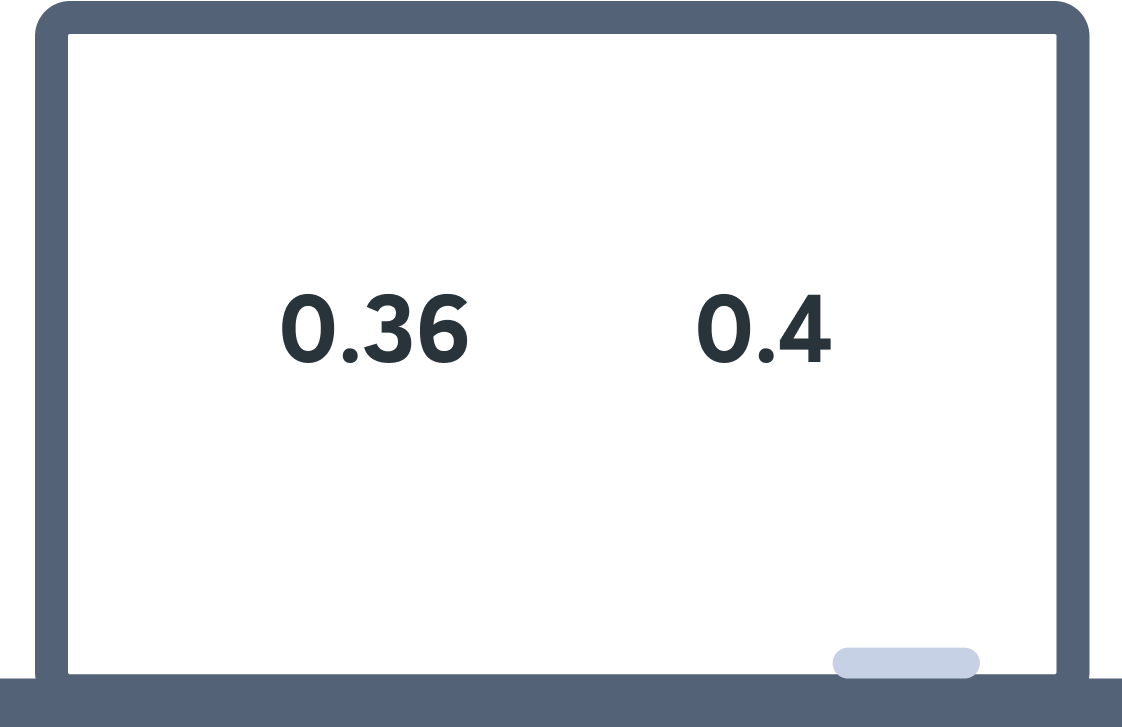
How many tenths are there in 0.36?
0.36 is "3 tenths + 6 hundredths" so there are 3 tenths.

Now we know that 0.36 has three tenths and 0.4 has four tenths, which number is larger?


We have found the larger number between 52 and 0.36.
The larger number is 52.

Let's try something a little harder.
Put these numbers in descending order.
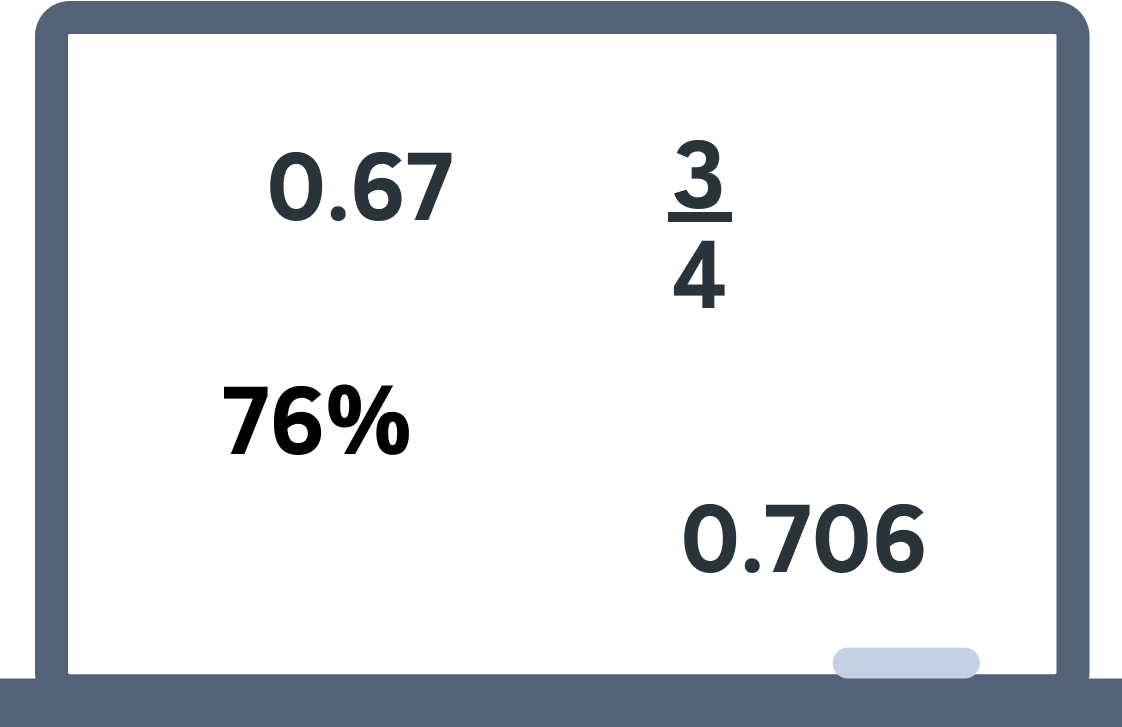
What does the word 'descending' mean?


Next, we need to convert all the numbers to decimals. What is 76% as a decimal?

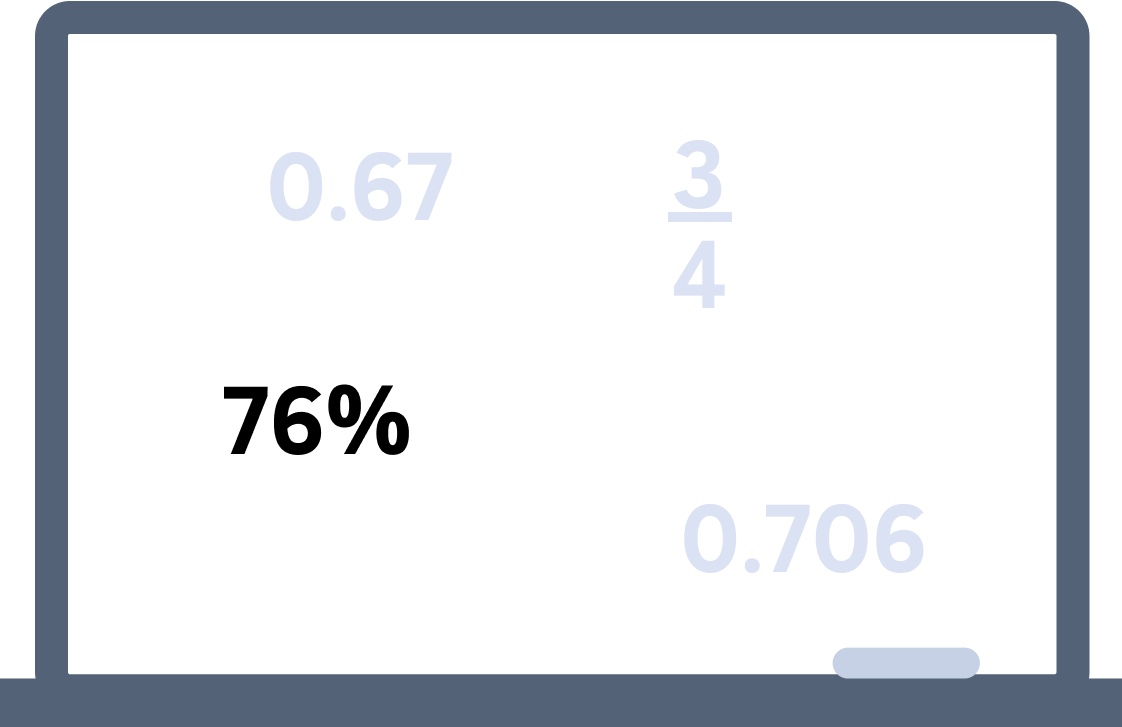
What is 43 as a decimal?

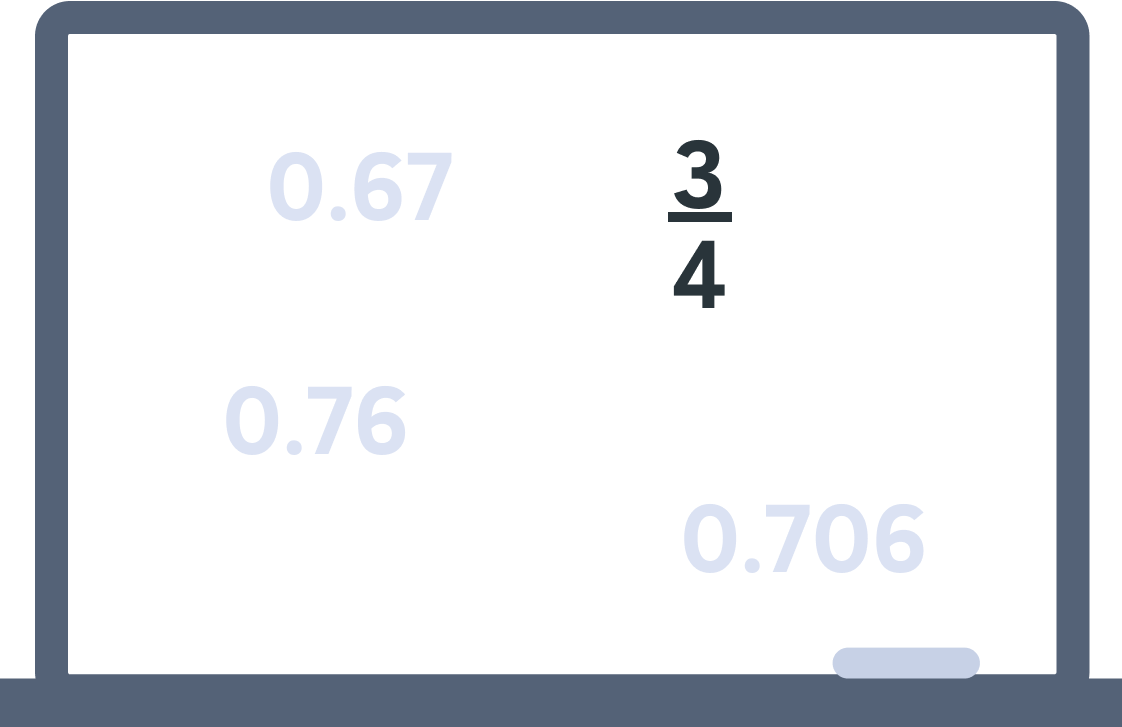
We now have four decimals and can compare the numbers as before.
Put the decimals in a column, making sure to line up the decimal point.

Which is the largest number?


What is the next largest number?


We now only have two numbers left.
The larger of these two is 0.706.

We can now write our numbers in descending order
It's a good idea to double check our working.

Let's put positive and negative numbers in ascending order: 0, −6, 4.8, −6.3
For ascending order do we start with the lowest or highest number?

What is the lowest number here?

As we move right from −6.3 on the number line what is the next smallest number?

We have our first two numbers, −6.3, −6. What number comes next?

Thats leaves us with the highest number
The highest number is 4.8
The numbers in ascending order are −6.3, −6, 0, 4.8
When ordering negative and positive numbers in ascending order, work with the negative numbers first, then zero if it is included and finally the positive numbers.
Summary! We have looked at four different types of number:
Whole number (integer), for example 120 Fraction, for example 41 Decimal, for example 2.54 Percentage, for example 76%

The definition of:
Ascending - means going up, start with the smallest number Descending - means going down, start with the largest number
To order decimal numbers, write them in a column and line up the decimal point.
Compare the tenths column first, then the hundredths and so on.
To order different numbers, convert the fractions to decimals
Compare them by lining up the decimal point.
Finally, we looked at negative numbers.
When putting numbers in ascending order, the negative numbers will all be on the left side.
